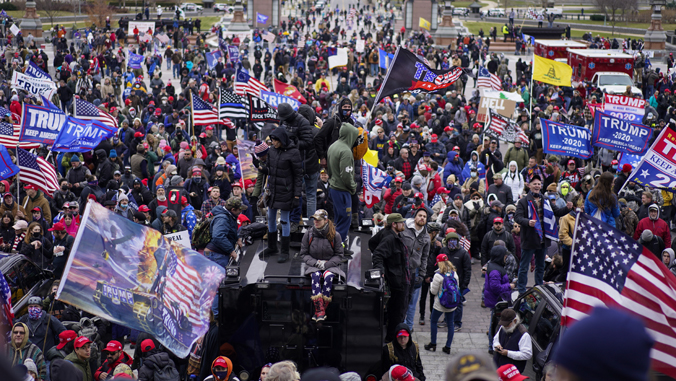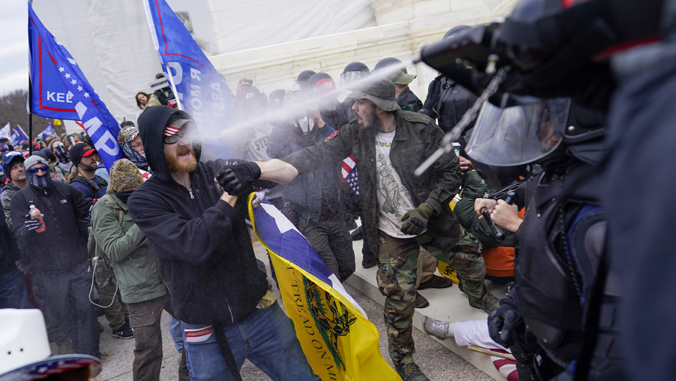
When a mob of then President Donald Trump supporters stormed the U.S. Capitol Building on January 6, 2021, University of Hawaiʻi at Mānoa alumnus Kent Nishimura, a Los Angeles Times photojournalist, was in the middle of the chaos. Nishimuraʻs assignment was the electoral vote certification but he found himself at the East side entrance “making pictures,” as he phrases it, of protesters attacking Capitol Hill police. Then the unthinkable happened.
“The officers pulled out and the doors opened and they (the protesters) kind of flooded in,” said Nishimura. “There was a moment where there were so many people trying to push in, I got squished with a bunch of others and I felt my feet leave the ground; and I was being carried and swept in by this momentum. I was like, ‘I guess we are going into building. People are going to get in trouble for this.’”
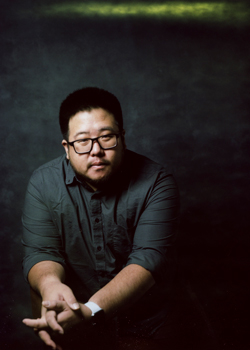
Unlike the mob, Nishimura had permission to be in the Capitol Building as a credentialed member of the press. He said it was surreal, especially observing the protesters as they began to walk the halls.
“A lot of people that broke in, they didn’t know what to do, and where to go,” said Nishimura. “The people I happened to be around were wandering aimlessly, taking selfies of themselves.”
Nishimura said he focused on making pictures and constantly assessing his threat level—standard operating procedure for journalists these days. From covering wildfires to protests, he is always making himself aware of all possible exits and escape routes, just in case. Though he said the majority of protesters on January 6 were polite, some yelled obscenities at him, calling him fake news, and one person attacked him.
“There was one gentleman who had a flagpole who struck me in the back of the head with it. Luckily, I had a tactical helmet and all I felt was the bump,” said Nishimura, who was also wearing body armor and a gas mask. “I just kept going because I don’t have time for that.”
He considers himself lucky. One photographer he knows was thrown from a wall on that day and another had their equipment destroyed.
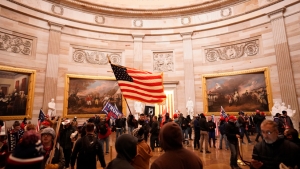
Nishimura eventually found himself between the police and protesters again. Officers were using tear gas and pepper spray and physically pushing the protesters towards the exits.
“I said, alright, this is getting crazy, I do not want to get into the middle of this.”
Knowing his way around from all his time in D.C., Nishimura cut down a couple of hallways and popped up behind police lines, and went back to work making pictures.
Non-traditional path back to a UH Mānoa degree
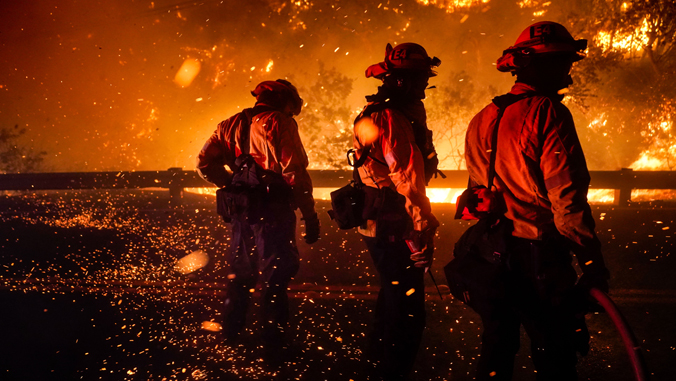
Though Nishimura did not expect to be in the middle of a historic event when he woke up that morning, it’s not surprising that he was there.
Nishimura moved to Hawaiʻi when he was a one-year-old and grew up in Kalihi. He graduated from Roosevelt High School in 2003 and started attending UH Mānoa in 2008, which is also when he started working as a photographer at the Ka Leo, the school newspaper. A few months later, he landed his first freelance assignment on the White House travel pool for Barack Obama’s first trip to Hawaiʻi after being elected president. He left school two years later to become a freelance photojournalist, full time. Nishimura said his time at UH Mānoa then had a significant impact on him, especially art Professor Stan Tomita, who has since retired.
“He set me on the path to think critically about creating a body of work and how art can be used to tell stories,” said Nishimura. “I had always seen my fine art photography and journalism in different silos. Stan helped me see that storytelling is not binary. You can use art to tell a story and how both storytelling and art can influence each other.”
Though successful as a freelancer, Nishimura was told by an LA Times editor that he would never get hired without a degree. He returned to UH Mānoa and graduated in 2017 with a BFA in art and art history with a focus in fine art photography. He said he continued to have great instructors along the way, such as Associate Professor Scott Groeniger, and that UH made it possible.
“I had a non-traditional path through college, and the fact that I could drop out of school, essentially, work, pursue a career, and then come back, feeling like I had not missed a beat, really says a lot about the university system,” Nishimura said.
Successful career credited to Hawaiʻi, UH

Nishimura was hired as a general assignment photographer by the LA Times after graduating and has covered everything from wildfires to protests, celebrity news to sporting events. He started 2020 covering the impeachment trial of President Donald Trump, then the COVID-19 pandemic, racial justice protests and the presidential election. He is now stationed in Washington D.C. and worked 18 days straight in January covering the siege, arrival of thousands of National Guard troops and the presidential inauguration. He said no matter where he is, Hawaiʻi is with him.
“It is so unlike the rest of the mainland in the sense of the cultural diversity and the values that I was brought up with,“ said Nishimura. ”It helps me think about things a little differently. I honestly, I don’t think I would have been able to approach things that way that I do without that background and that experience, growing up and going to school there.”
